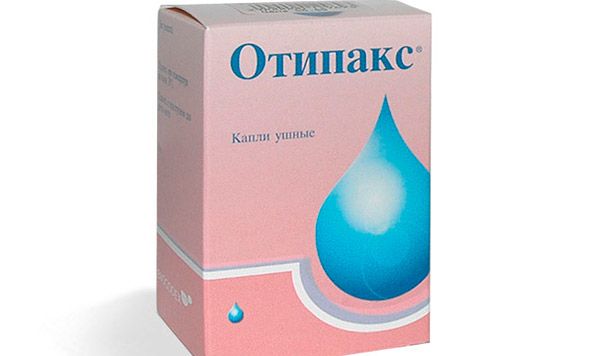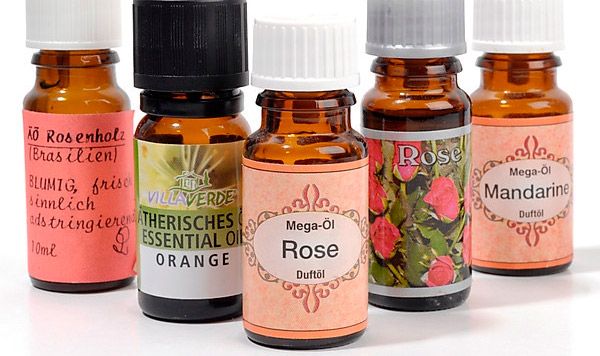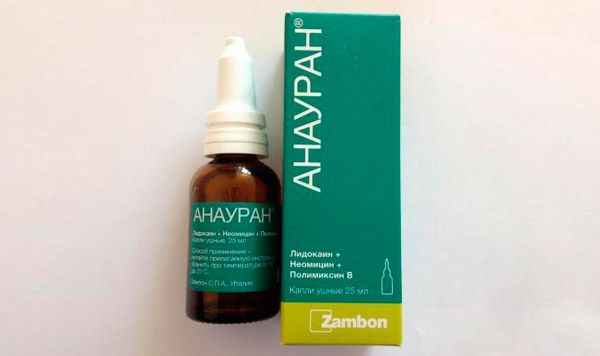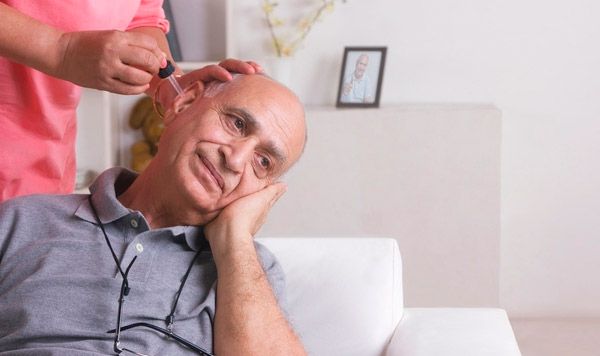
All iLive content is medically reviewed or fact checked to ensure as much factual accuracy as possible.
We have strict sourcing guidelines and only link to reputable media sites, academic research institutions and, whenever possible, medically peer reviewed studies. Note that the numbers in parentheses ([1], [2], etc.) are clickable links to these studies.
If you feel that any of our content is inaccurate, out-of-date, or otherwise questionable, please select it and press Ctrl + Enter.
Drops for otitis media
Medical expert of the article
Last reviewed: 04.07.2025
Drops for otitis are prescribed to achieve the maximum result in the treatment of the disease. Otitis is an inflammatory process of one of the parts of the ear, which often occurs as a result of a nasopharyngeal infection. When pain occurs in the ear or in nearby areas, this is the first sign that it is necessary to contact an otolaryngologist as soon as possible for examination and diagnosis. This will give the chance to start treatment in a timely manner and the opportunity to avoid serious consequences in the advanced state of the patient.
The inflammatory process can begin in the ear after a severe cold, due to viral infections of the upper respiratory tract. External otitis can be provoked by psoriasis and eczema. Inflammation can be caused by unsuccessful hygienic cleaning of the ears.
Most doctors prescribe ear drops to treat otitis. These medications contain effective anti-inflammatory components, as well as antibiotics. Together, they help fight otitis.
Read also about the use of ear drops for otitis in children.
Otipax
Ear drops with phenazone and lidocaine, which have analgesic and anti-inflammatory effects. Prescribed for local therapy and pain relief in otitis media.
Contraindications for use: individual sensitivity to the components, infectious or traumatic damage to the integrity of the eardrum.

After a preliminary consultation with an otolaryngologist and only in case of urgent need, Otipax can be used by pregnant women and during breastfeeding. It can also be used by children during breastfeeding.
Method of administration and dosage - for children of any age, as well as for adults, instill 4 drops into the sore ear up to three times a day. The course of therapy should last no more than 10 days, after which it is necessary to review the method of therapy.
Side effects may include local allergic reactions, itching and redness of the skin.
The guaranteed shelf life is 3 years and a month after opening the bottle. Store the drops at a temperature of up to 25 degrees in a dark place.
Otofa
An antimicrobial drug whose active ingredient is rifamycin.
Pharmacodynamics: rifamycin has antimicrobial activity against most microorganisms that contribute to the development of infectious and inflammatory diseases of the middle ear. Rifamycin does not affect Pseudomonas aeruginosa (blue pus bacillus).
The drug is used in the treatment of acute purulent discharge from the ear after surgery, exacerbation of chronic otitis, isolated purulent lesions of the eardrum.
The drops are used locally, by instilling into the external auditory canal of the diseased ear twice a day. For adults, it is recommended to instill 5 drops, for children - 3 drops, without age restrictions.
Otofa is contraindicated in case of allergic reactions to the components of the medication.
During breastfeeding and pregnancy, the drug can be used after consulting a doctor.
Since the medication has low absorption, overdose is unlikely.
Side effects include allergic rashes, bronchospasm, and eczema.

Store at a temperature not exceeding 25 °C. After completion of treatment, do not store the opened bottle until further use.
Dancil
Antimicrobial agent with a broad spectrum of action. The active component of Dancil is ofloxacin. Recommended for the treatment of acute inflammatory processes in the ear.
Pharmacokinetics: after use, the components of the drops are easily and quickly absorbed. Mostly excreted in the original form with urine, a small part with feces in the original form within 6-13 hours.
Do not use Dancil if you are pregnant or breastfeeding, or if you are a child under 18 years of age or have an individual sensitivity to ofloxacin.
The recommended dose of drops for external otitis is 10 drops per day. Treatment lasts about 10 days.
If chronic otitis – 10 drops twice a day for about 2 weeks.
For inflammation of the middle ear, the recommended treatment with Dancil at a dose of 5 drops three times a day should not be continued for more than 10 days.
Possible side effects include: nausea, diarrhea, dizziness, insomnia, hives, itching.

Recommended storage conditions: dark place, temperature up to 25 degrees.
The shelf life of the drug is 2 years, after the bottle is opened - one month.
 [ 5 ]
[ 5 ]
Oil drops
The basis of such drops are natural extracts or oils that have antimicrobial, anti-inflammatory, analgesic and anti-itching effects.
The use of such a drug is prohibited for those who have individual sensitivity to the components, or if there is damage to the skin.
Oil drops are used in the form of moistened turundas, which are placed in the ear canal 3-4 times a day.
During breastfeeding and pregnancy, use the medicine only after prior consultation with a doctor.

Side effects may include itching, allergic skin reactions, and, rarely, contact dermatitis.
Anauran
Antimicrobial drops, the main components of which are polymyxin B sulfate, lidocaine and neomycin sulfate.
The use of this drug is indicated for chronic and acute forms of external otitis, acute otitis media, purulent inflammatory complications after radical mastoidectomy in the postoperative period, tympanoplasty.
Do not use Anauran if you have individual hypersensitivity to the active components of the drug.
For treatment, 4-5 drops are prescribed in the sore ear 2 to 4 times a day for adults. Children who have reached 6 years of age - 2-3 drops up to 4 times a day, depending on the severity of the disease.

Undesirable side effects of the body may include local allergic rashes on the skin and peeling of the skin in the area of the external auditory canal.
It is prohibited to use the drug for pregnant and lactating women, as well as children under 6 years of age.
The shelf life of the drug is 3 years, an opened bottle of the drug should not be used for more than 3 months.
Drops for purulent otitis
Purulent otitis is the melting of the eardrum and the release of purulent discharge. This form of otitis occurs in 1/3 of cases of otitis media.
In case of purulent otitis, it is necessary to treat the ear canal with a solution of hydrogen peroxide or another agent with an antiseptic effect. For treatment, you can also use drops for purulent otitis: Otofa, Normax and Tsipromed.
Otofa, the active substance of which is rifamycin, has antimicrobial activity against most microorganisms that provoke the development of purulent otitis. It is recommended for adults to use 5 drops three times a day, for children, without age restrictions - 3 drops in the morning and evening.
The active component of Normax drops is the fluoroquinolone antibiotic norfloxacin. The drug is prescribed 2-3 drops 4 to 6 times a day, but when the case is more severe, it is recommended to drip into the sore ear every three hours. Normax is not used during pregnancy and for children under 12 years of age.
The drops Tsipromed contain ciprofloxacin, which helps actively fight infection. The dose of the medicine for adults is 5 drops in the sore ear canal three times a day. Treatment lasts from 3 to 5 days. The drops cannot be used by children under 15 years of age, as well as during pregnancy and lactation.
 [ 8 ]
[ 8 ]
Drops for otitis media
Otitis media is an inflammatory process in the middle ear, often occurring in childhood as a consequence of colds, acute inflammatory pathologies of the ENT organs of various etiologies.
For the treatment of otitis media, you can use drops Sofradex and Otipax.
Sofradex is the active substance framycetin sulfate, which has a bactericidal effect on microorganisms that cause middle ear disease. Drip 2-3 drops into the sore ear 3-4 times a day for adults and children over 7 years old. Therapy should not last more than a week.

The active ingredient of Otipax is phenazone, which has analgesic, anti-inflammatory and pain-relieving properties. The daily dose of Otipax is 4 drops, 2-3 times. Treatment with the drug is up to 10 days.
 [ 9 ]
[ 9 ]
Drops for catarrhal otitis
Catarrhal otitis is an acute catarrhal inflammation of the mucous membrane of the middle ear (tympanic cavity, mastoid process, Eustachian tube), accompanied by acute pain that intensifies when coughing, sneezing, swallowing. If you do not pay attention to these signs, then there is a possibility of developing acute purulent otitis.
For treatment of catarrhal otitis, drops such as Anauran and Otinum are used.
Anauran is a broad-spectrum aminoglycoside antibiotic. It has a bactericidal effect on gram-positive and gram-negative microorganisms. The diseased ear should be instilled 2 to 4 times a day, 4-5 drops. Drops are not recommended for use in children under 6 years of age, as well as during pregnancy and breastfeeding.
The active component of Otinum is choline salicylate. This derivative of salicylic acid has an anti-inflammatory and analgesic effect. The recommended dose of the drug for adults is 3-4 drops up to four times a day. Pregnant and lactating women, as well as children, are not recommended to use these drops.
Nasal drops for otitis
In order to reduce the signs of swelling in the area of the pharyngeal opening of the Eustachian tube, it is possible to use vasoconstrictor drops for otitis, such as Sanorin, Galazolin, Otrivin, Tizin.
After using these medications, signs of edema, hyperemia, and exudation are reduced, which leads to the opening and expansion of the outlet ducts of the paranasal sinuses and auditory tubes, improves the removal of secretions and protects against the deposition of microbes.
Ear drops with antibiotic
Drops with an antibiotic are prescribed for the treatment of otitis in cases where other substances do not provide the desired effect: Levomycetin, Normax.
Levomycetin drops for otitis are recommended for use in children over 1 year old and adults, 2-3 drops once or twice a day. In case of abundant discharge from the ear canal, the use of the drug is increased to four times a day.
Normax - the active component norfloxacin has a broad antimicrobial effect. For the treatment of otitis, it is recommended to instill 5 drops into the diseased ear canal three times a day for adults and children over 15 years old. Before instillation, it is necessary to clean the ear canal, and after the procedure - close it with a turunda. Side effects may include itching and an unpleasant taste in the mouth.
It is not recommended to use drops for otitis independently, without the doctor's recommendations. It is necessary to consult an otolaryngologist in order not to harm yourself with self-medication.
Attention!
To simplify the perception of information, this instruction for use of the drug "Drops for otitis media" translated and presented in a special form on the basis of the official instructions for medical use of the drug. Before use read the annotation that came directly to medicines.
Description provided for informational purposes and is not a guide to self-healing. The need for this drug, the purpose of the treatment regimen, methods and dose of the drug is determined solely by the attending physician. Self-medication is dangerous for your health.

